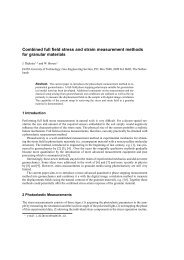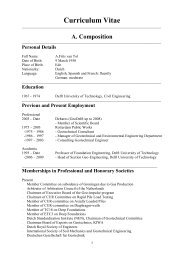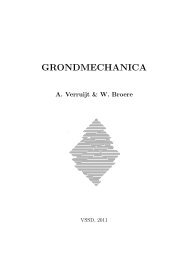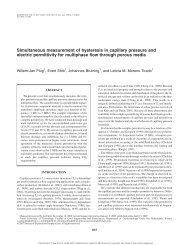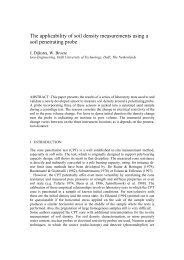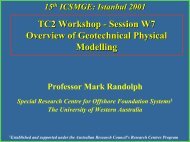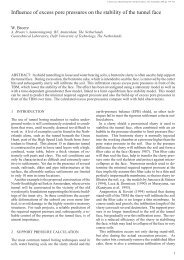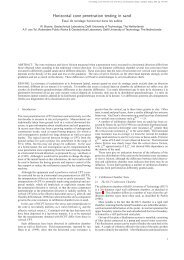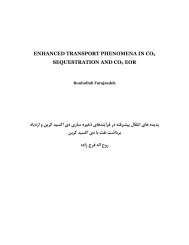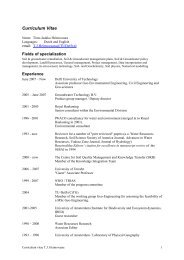Tunnel Face Stability & New CPT Applications - Geo-Engineering
Tunnel Face Stability & New CPT Applications - Geo-Engineering
Tunnel Face Stability & New CPT Applications - Geo-Engineering
Create successful ePaper yourself
Turn your PDF publications into a flip-book with our unique Google optimized e-Paper software.
24 2. <strong>Stability</strong> Analysis of the <strong>Tunnel</strong> <strong>Face</strong>Figure 2.23: Pressure fluctuations [92]close to the actual allowable minimal support pressure. Care must be taken however to ensurethat these design rules are used for the soil conditions they were developed for. An often quotedrule of thumb for the support pressure is [62]s min = K a σ v ′ + p + 20kPa. (2.23)Kanayasu [92] lists the used support pressure for a number of Japanese tunnelling projects(see table 2.3). For EPB tunnelling projects the earth pressure at rest has often been used toestablish the working pressure. Depending on the soil conditions the water pressure and/or asmall safety margin is added. For slurry shield tunnelling the support pressure is predominantlybased on the water pressure, to which the active earth pressure and/or a small safety margin isadded. The safety margin is used to intercept the pressure fluctuations that occur during a normalboring process. From the figures quoted in table 2.3 it can be seen that fluctuations in the orderof 20kPa may occur during a regular boring process.The magnitude of the support pressure fluctuations depends on the quality control of theboring process. Kanayasu illustrates this by two examples, one for a regular boring process andone for a badly controlled boring process (see figure 2.23). In the badly controlled case suddenchanges of over 100kPa may occur. Aristaghes [10] suggests that such pressure fluctuations arean indication of local instabilities occurring at the face, which in turn is seen as an indicationthat the face is near global collapse.Another estimate for the required support pressure, based on field observations and localpractise, has been proposed by Mori [121]. He proposes the difference between the earth pressureat rest and the pressure exerted by the cutter wheel as a suitable working pressure, especially incohesive soils excavated with a full-face cutting wheel. It is not clear however whether this ruleof thumb is limited to earth pressure balance shields or to cases where groundwater flow playsa secondary role.As noted earlier, the stability of the face is a problem in heterogeneous soils, especially whendifferent soil layers are present at the face. The different layers may well make different or evencontradictory demands on the required support pressure. Stratification at the face may also lead



